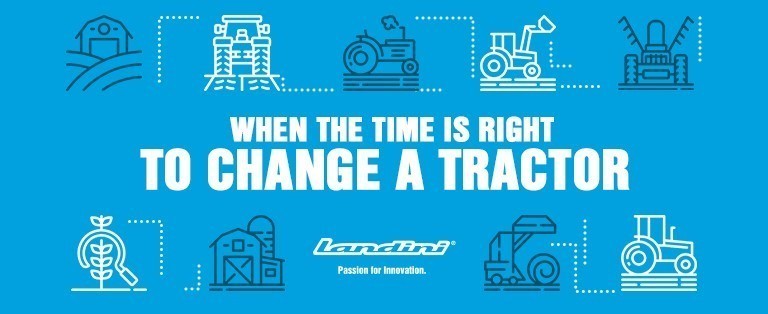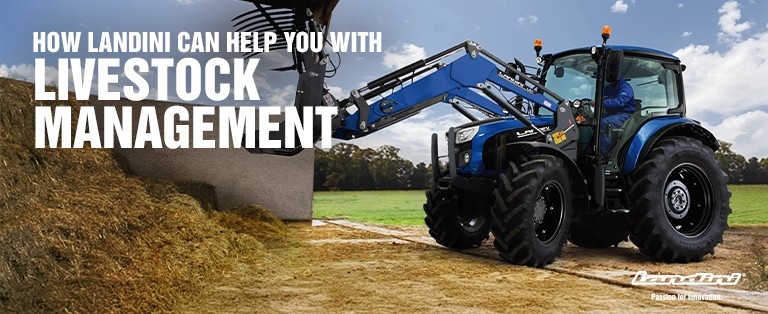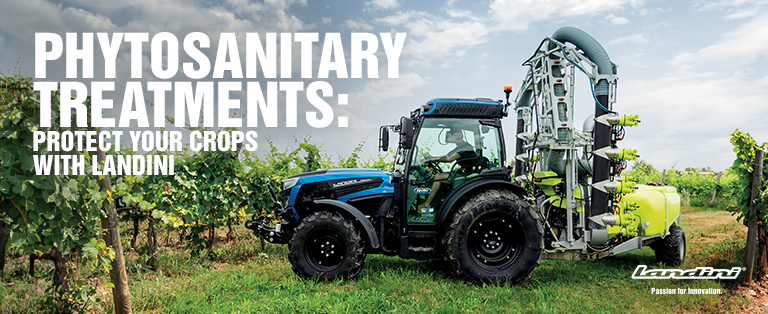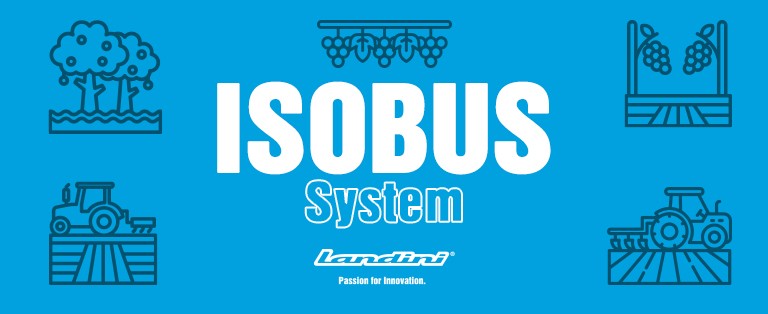When the time is right to change a tractor – choices for renewing your fleet

Table of contents:
How to calculate the life of a tractor, between maintenance and working hours
Tractors have a rather long working life, the duration of which depends on many factors, primarily the level of maintenance and the hours the machine has been in the field. We have talked about the great value of maintenance in several articles. It is essential to take good care of your vehicle, both for better quality and safety of work and so that you do not end up changing parts or having to buy a new model much sooner than expected. That’s why Landini has created Scheduled Maintenance Programmes, designed for the well-being of the machine, the farmer and the business, with a dedicated Landini team and guaranteed service, for a tractor that always works at high performance.
Added to this is a statistic that is extremely variable depending on the history of the company using the tractor: the hours the tractor has actually worked in the field. As an example, a modern tractor has an average life of 15,000 hours, which is supposed to be completed in 10-15 years. This has changed a lot in the last 20 years, which is why today you can see very different machines within the same fleet, modern tractors and vehicles that are 30 to 40 years old but still operate well.
This is because for a long time the agricultural sector has been characterised by a high ageing rate and only in recent years has it caught up with other sectors by innovating technology on machines and halving their weight. The target audience has also changed, seeing fewer and fewer small companies in favour of more structured agricultural businesses, with greater demands for state-of-the-art machinery fleets.
When does a tractor get old? Age also depends on the way of life
The above figures for working hours, years of life and tractor maintenance are certainly broad average numbers, which may be valid in principle, but should not be considered the only factors when considering the right time to change a tractor. In fact, another fundamental aspect must be added: the type of work performed by the tractor. Open field or specialised tractors have a very different daily routine, as do haymaking/material transport tractors or orchard tractors; the wear and tear on materials – from tyres to the engine, from the clutch to the cab – and undoubtedly also the hostility of the climate and soil conditions vary.
Added to this – an aspect that is all too often overlooked – is that the more the tractor is used, the more it endures: making the most of a machine is useful not only for one’s own business, but also for the vehicle itself, while leaving it immaculate and almost unused harms the machine far more than one would think.
Changing your tractor: how to choose?
As we have seen, choosing to change your tractor is not easy, nor is it a decision you can make without first evaluating all the different factors. However, once one has come to the conclusion that it is indeed time to change vehicle, it is very important to decide which approach to follow: rental, used or new purchase?
Let’s take a look at their characteristics and advantages:
- RENTAL: a new service in the agricultural sector, tractor rental is one of the options to consider when changing tractors. The great advantages of this system are that of having a perfectly state-of-the-art machine, even just for certain periods of time, without an excessive initial cost, and also that of having packages that are often all-inclusive. However, precisely because of the novelty this practice represents in the world of agriculture, the supply is still extremely limited and the fees still too high.
- USED: this is one of the quickest buying options in the tractor world (and elsewhere), but nowadays it is very difficult to find a used tractor in excellent condition with all the features you need. Precisely because, as we have said, it is a good idea to use these machines while you have the chance. Furthermore, the issue of price is quite complex, since the attribution of value cannot be – in this sector – unambiguous and shared. What is certain, however, is that the necessary requirements to be taken into consideration are: choosing models that are up-to-date – especially due to the increasingly advanced level of technological and digital innovation that characterises this sector today -, that have original parts, that are up to standard and that are reasonably priced. This is why this solution is often chosen by companies that are just starting up or have large fleets (waiting for new tractors or to allocate them to secondary activities), while it is less undertaken by contractors.
- PURCHASE: buying a new tractor is still the preferred choice today, as it gives total certainty of investing in a tool tailored to one’s needs, both in terms of technology – which will always be the most advanced at the time of purchase -, productivity – thanks to increased power and/or efficiency, safety and comfort – essential for the driver’s well-being -, and last but not least, environmental sustainability – now an essential feature. Not to mention that guaranteed support and service are two pluses that can make all the difference in the operation and maintenance of your new tractor right from the start.
The purchase of a new tractor is also promoted by incentives for agriculture
A further and fundamental advantage of buying a new tractor in the current year is the European incentives still in force. Taking advantage of these facilities is also and above all important to obtain added value generated by the new technologies available, in terms of rationalisation, production and sustainability of agricultural activity.
So an initial investment brings economic benefits to your business, improves land treatment and safeguards the planet. Don’t wait: buying a new tractor at the right time is the best choice you can make for your farm and the environment.



